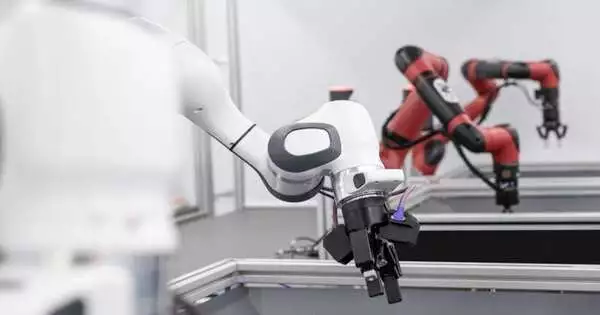“Cats and computers both have one thing in common—they both rule the Internet,” remarked an unidentified admirer of felines once.
RoboCat, a robot developed recently by researchers at Google’s DeepMind, is expected to make a significant leap into a future world of self-teaching automatons, even though it does not yet control the Internet.
The DeepMind team, which included more than 30 researchers, claimed to have made a breakthrough with a robotic cat that not only learns new tasks quickly but can also improve its performance by constructing its own performance data. This was accomplished by utilizing the same technology that is used in large-language models.
“RoboCat learns much faster than other cutting-edge models; it can learn a new task in as few as 100 demonstrations because it draws on a large and diverse data set.”
DeepMind researchers
DeepMind stated in a paper that was posted to the preprint server arXiv that “RoboCat has a virtuous cycle of training.” It becomes better at learning additional new tasks the more it learns.”
Robots have typically carried out particular, pre-programmed tasks up until this point. Robot skill sets began to expand with the introduction of large language models, but training on the huge amounts of data required a lot of time.
Robocat, according to DeepMind, can, however, quickly learn new tasks like putting fruit in a bowl or putting puzzle pieces of different shapes in the right holes. It was then able to advance and carry out more difficult tasks “based on a data set of millions of trajectories” derived from previously completed tasks and brand-new self-generated data.
According to the findings of the researchers, “These improvements were due to RoboCat’s growing breadth of experience, similar to how people develop a more diverse range of skills as they deepen their learning in a given domain.”
RoboCat’s new learned behaviors were passed on to other robots, which then built on those skills as they improved their technique.
Between 100 and 1,000 demonstrations with a human-controlled robotic arm helped the robot improve its performance. After that, specific tasks were used to train spin-off models, and the results were added to the general instruction pool.
In the beginning, RoboCat was able to complete tasks it had not previously learned with a success rate of 36%, but its performance improved over time. It doubled its success rate through self-training.
DeepMind researchers stated that “RoboCat learns much faster than other state-of-the-art models.” Because it uses a large and varied data set, it can begin a new task with as few as 100 demonstrations.”
“As it reduces the need for human-supervised training and is an important step towards creating a general-purpose robot,” the development is regarded as a significant step toward accelerating robotics research.
The article, “RoboCat: On June 20, the publication “A Self-Improving Foundation Agent for Robotic Manipulation” was released.
Will these robots one day eliminate the need for human intervention?
The 1921 play “R.U.R.” addressed that concern 100 years ago. “Rossum’s Universal Robots,” a story written by Karel Apek in Czech
The play was about a factory that made synthetic humanoids that worked constantly and eventually cut labor costs by 80 percent. After the Czech word “robota,” which meant “forced labor by serfs,” the word “robot” was used for the first time in this play.
The robots ultimately rebelled and destroyed humanity.
We can only hope that robot cats will be friendlier.
However, we must also keep in mind what the comedian Will Rogers once said: It’s much simpler to let the cat out of the bag than to put it back in.”
More information: Konstantinos Bousmalis et al, RoboCat: A Self-Improving Foundation Agent for Robotic Manipulation, arXiv (2023). DOI: 10.48550/arxiv.2306.11706





